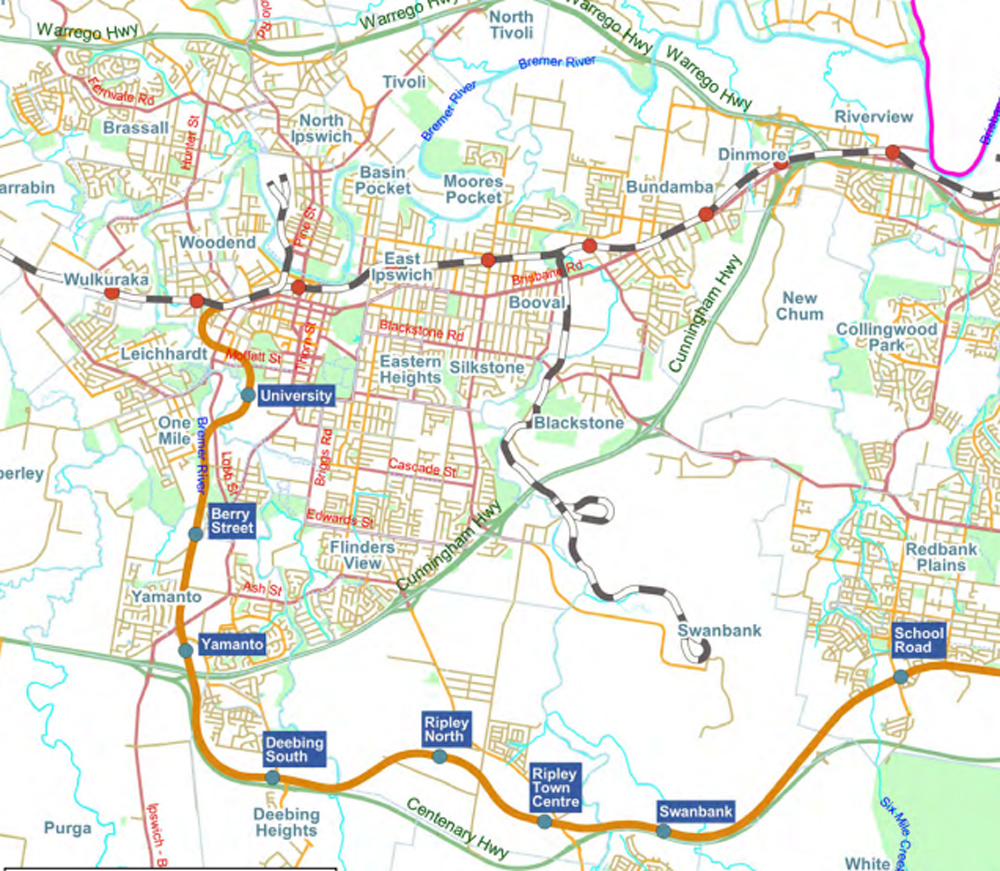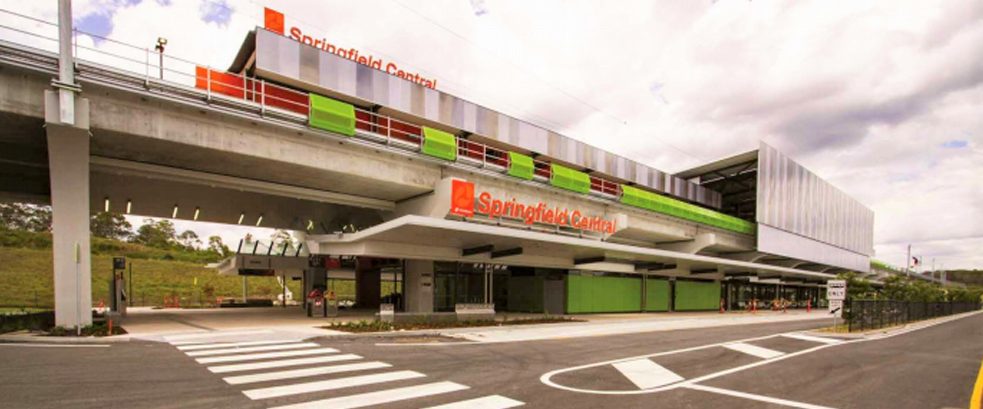The development of a 25-kilometre public transport corridor from Ipswich Central to Springfield Central is seen as critical to the future of the city and South East Queensland.
A special report presented to Ipswich City Council this week, Ipswich Central to Springfield Central Public Transport Corridor, details the importance of this line, including providing an essential link to new suburbs emerging across the city, new business and employment opportunities.
Council’s Economic Development manager Paul Massingham said the project presents an opportunity to deliver a public transport solution that addresses the current and emerging growth facing the Ipswich region and South East Queensland.
“The Ipswich Central to Springfield Central Public Transport Corridor is approximately 25km in length and is proposed to include the construction of nine stations,” he said.
“The project is a critical component of the transport network and will create new social and economic opportunities and community services, connecting the key activity centres of Ipswich, Ripley Valley, Springfield and surrounding areas.
“This project is critical to the future of Ipswich and SEQ with population growth in this corridor already the highest in Queensland and expected to grow to almost 259,000 by 2036.”
The Ipswich Central to Springfield Central Public Transport Corridor is recognised as a priority project by the State Government and is considered the region’s highest priority infrastructure project to meet the needs of our future growth.

New stations needed for the Springfield rail line.
“Network effectiveness and road congestion are increasingly significant impediments to economic productivity and overall quality of life for communities. Improved transport services are critical to the regions ability to deliver real economic and community outcomes,” Mr Massingham said.
“Projects of this scale require years of rigorous planning and therefore it is critical that council takes a leadership position on driving this project forward.”
Council’s Office of Economic Development will work with key stakeholders and immediately progress with the implementation of stage 1 (Strategic Business Case) of three formal planning stages.
“The Ipswich Central to Spring Central public transport corridor will enhance the benefits delivered by Cross River Rail (CRR), increasing capacity and efficiency in the SEQrail network,” he said.
“To enable the project to be ready for construction after the completion of CRR, it is imperative that the three key stages of planning are completed prior to CRR becoming operational in 2024.
“Immediate action is critical to ensure that the Ipswich Central to Springfield Central public transport corridor remains a priority project at all levels of government and is delivered in a timeframe that meets the needs of the regions rapid growth.”
Currently, Springfield residents travelling by rail to Ipswich have to catch a Brisbane CBD-bound train, get off at Darra station then switch to an Ipswich-bound train.
That trips takes a minimum 50 minutes providing the connection as Darra is prompt. A direct Springfield Central to Ipswich Central train would halve the time for that journey.
A community survey conducted by council found that 43 per cent of respondents said public transport was not convenient or easy to use; 46 per cent said it takes too long, and 38 per cent did not use it because of the lack of stops or stations near their home or travel destination.
This dissatisfaction has created a fundamental problem in Ipswich – an over-reliance on private vehicles and congestion on our roads.


